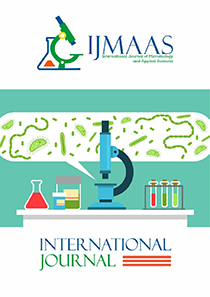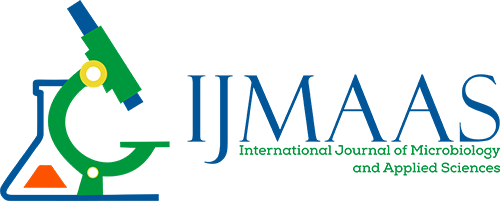Application of Wild Yeasts (Pichia kudriavzevii and Saccharomyces pastorianus) Isolated from Palm Wine and Banana for Bread Baking
Vol. 3, Issue 3, 2024
KEYWORDS
Wild yeast, palm wine, banana, bread, Pichia kudriavzevii, Saccharomyces pastorianus.
Abstract
Baker’s yeast is utilized for manufacturing of bread throughout the globe at an industrial scale and is totally imported from developed countries. Therefore, the aim of this study was the isolation and use of wide yeast (Pichia kudriavzevii and Saccharomyces pastorianus) for bread baking. Banana (Musa acuminate and Musa paradisiaca) and freshly tapped Palm wine from Raphia raphia and Elaensis guineensis were used for the isolation of the wild yeast, using enrichment media and their potential in bread production was evaluated by Dough Raising Capacity (DRC). The commercial yeast, Saccharomyces cerevisiae was used as control. Yeast isolates were identified based on microscopic, macroscopic and molecular methods. Proximate analyses of the baked bread were carried out using standard procedures. The results obtained were analyzed statistically using SPSS version 25. The yeast counts ranged from 1.65 x 103 to 1.84 x 103 cfu/ml for palm wine and 8.4 x 103 to 9.3 x 103 cfu/g for the banana. The screened yeast isolates were further identified using molecular techniques as Pichia pastoris EF116884.1, Pichia kudriavzevii LC413230.1, Saccharomyces pastorianus D89889.1. Saccharomyces cerevisiae LC576598.1.1. The results of the proximate composition show that carbohydrate content ranged from 54.1 to 59. 6%, crude protein ranged from 7.6 to 8.7%, moisture content ranged from 19.6 to 24.8%, while fat content ranged from 7.8 12%. Saccharomyces pastorianus produced the highest carbohydrate content of 59.6% than the other isolates. The results showed that the bread baked with wild yeasts and commercial baker’s yeast, that there was significant difference between the bread types with regards to moisture content, fat, protein, carbohydrate between the bread baked with Pichia species and the control but no significant difference between Saccharomyces pastorianus isolated from palm wine. The Saccharomyces pastorianus had 92.59% DRC while Pichia kudriavzevii had 74.01%, when compared to the commercial yeast with dough raising capacity of 100%. Hence, the results of the DRC are as follows: Saccharomyces cerevisiae > Saccharomyces pastorianus > Pichia kudriavzevii > Pichia pastoris. This study has shown that wild yeasts are a potential sources of bakers’ yeasts, especially Saccharomyces pastorianus (with DRC of 92.59%) isolated from palm wine is recommended for use in bread making as an alternative to imported baker’s yeast.
Current: Vol. 4, Issue 1, 2025

Call for papers
The International Journal of Microbiology and Applied Sciences warmly welcome your valuable articles for publication.
